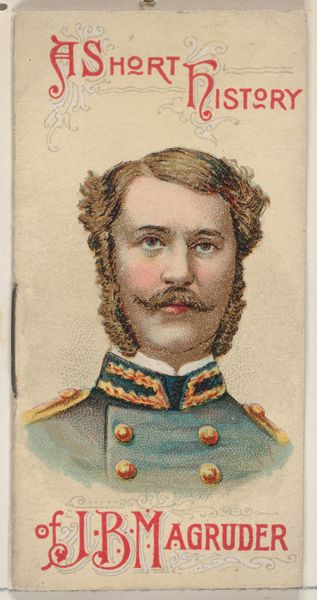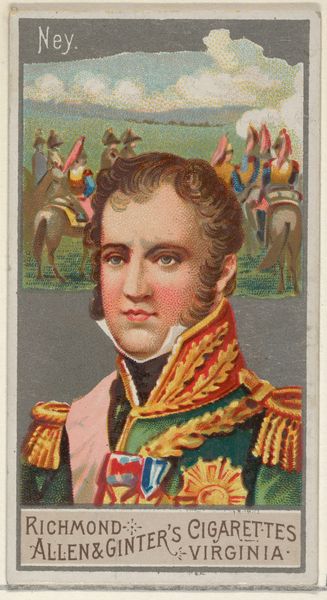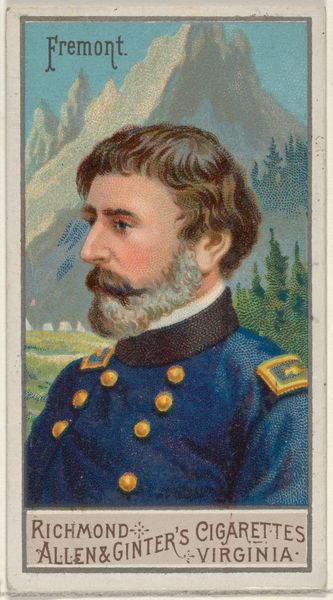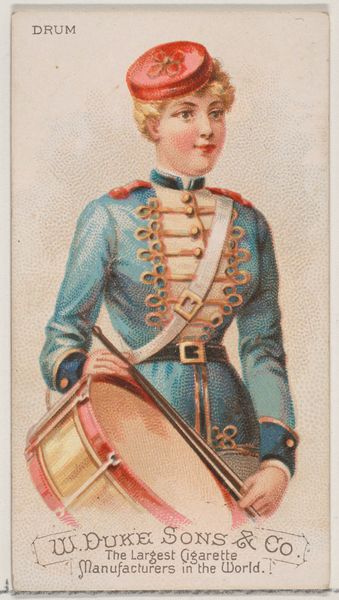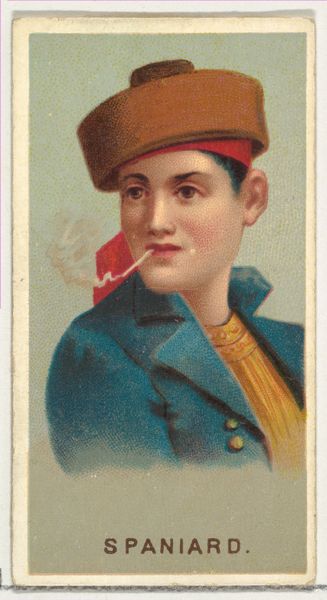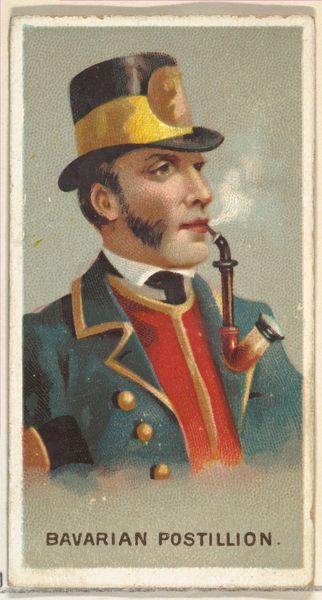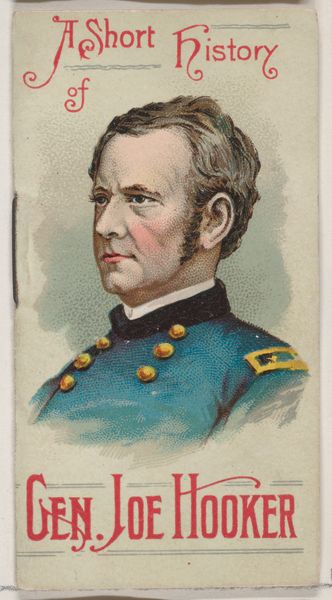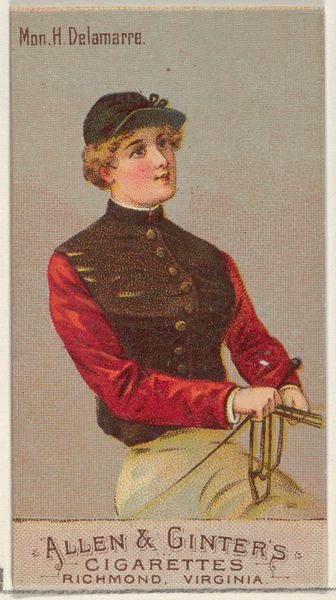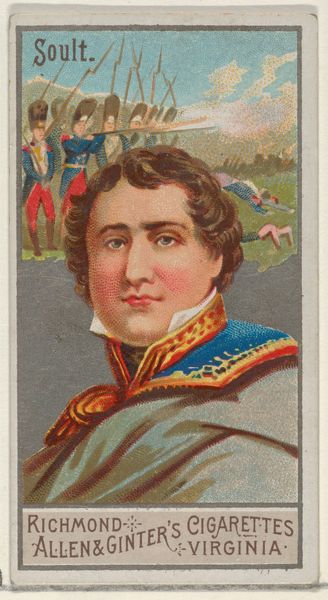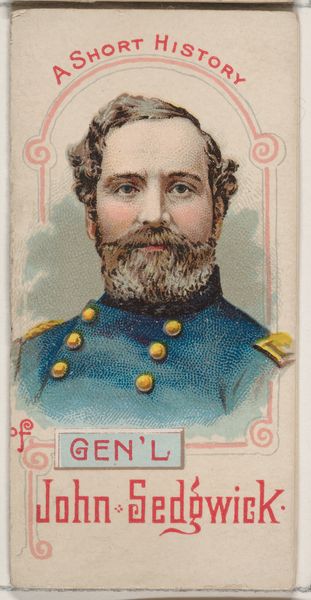
William Jenkins Worth, from the Great Generals series (N15) for Allen & Ginter Cigarettes Brands 1888
0:00
0:00
drawing, print
#
portrait
#
drawing
# print
#
caricature
#
figuration
#
orientalism
#
men
#
portrait drawing
#
history-painting
#
academic-art
#
portrait art
#
watercolor
Dimensions: Sheet: 2 3/4 x 1 1/2 in. (7 x 3.8 cm)
Copyright: Public Domain
Curator: This small print, dating to 1888, is entitled "William Jenkins Worth, from the Great Generals series," and it was designed for Allen & Ginter Cigarettes. Editor: It's rather quaint, isn't it? A miniature portrait that almost feels like a caricature. There’s an interesting blend of formality and commercial appeal here. Curator: Precisely. These cards, produced by cigarette companies, were essentially advertisements and collector's items. Allen & Ginter was particularly known for their sets depicting prominent figures. We see echoes of Orientalism mingling with traditional Academic art. Editor: That’s evident in the stylized depiction of Worth. The rigid posture and simplified lines remind us of the visual culture in the late 19th century—one deeply entangled with colonial aspirations and a burgeoning consumer culture. What's with the little palm tree on the right corner? Curator: It’s a motif used throughout this "Great Generals" series, lending an air of exoticism. The artist connects General Worth to foreign, and thus dangerous lands to imply an interesting background and build prestige around a military figure during the time. Editor: A subtle, yet effective, piece of propaganda, packaging military might with allure. The idealized features of General Worth are very striking. This idealization, however, obscures a far more complex reality when we start thinking about the impact of military campaigns on those very "exotic" lands. Curator: Absolutely, and it reveals much about the period's understanding, and misunderstanding, of global politics. The card transforms a historical figure into a symbol—detached from the intricacies and repercussions of his actions. Editor: Seeing this piece, I’m compelled to critically examine how our heroes are manufactured and sold. Who benefits from these simplified, almost palatable narratives? This image becomes a lens through which to see the cultural work images do in manufacturing consent. Curator: And the object itself reminds us of art's embeddedness within commerce, culture, and ideology. Editor: A pocket-sized prompt, then, urging us to reflect on history's complicated relationship to the present.
Comments
No comments
Be the first to comment and join the conversation on the ultimate creative platform.
